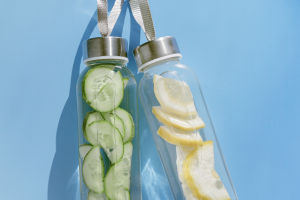Dear Lykkers! Japan is known for its rich cultural heritage, but its food, particularly traditional sweets, deserves a spotlight of its own.
Japanese sweets, or wagashi, are an art form, celebrated not just for their taste but also for their delicate appearances.
From the chewy texture of mochi to the refreshing flavor of yokan, Japanese sweets offer a unique experience for both the eyes and the palate.
A World of Traditional Japanese Sweets
Mochi: One of the most popular traditional Japanese sweets, mochi is made from pounded sticky rice. It has a soft, chewy texture and is often filled with sweetened red bean paste or flavored with fruits like strawberry. Mochi is also served during special festivals like New Year's, making it a treat that carries cultural significance.
Dorayaki: This sweet consists of two small pancakes filled with a layer of anko (sweet red bean paste). The pancakes are fluffy and light, and the combination of the slightly savory bean paste and the sweet pancake makes dorayaki a perfect snack with tea.
Yokan: A traditional jelly-like dessert made from anko, yokan is typically served in clubs and has a refreshing, smooth texture. It can be flavored with ingredients like green tea, chestnuts, or fruits. Yokan is a popular treat during the summer and is often enjoyed cold.
Daifuku: This is a type of mochi filled with various fillings like red bean paste, strawberries, or even ice cream. Daifuku has a soft, sticky texture that makes it a favorite for people who love chewy sweets. The most famous version is ichigo daifuku, which contains a whole strawberry inside the mochi.
Modern Japanese Sweets
Japan's passion for desserts extends beyond traditional treats. Modern Japanese sweets have become a fusion of Western influences and traditional flavors, creating an entirely new category of confections.
Matcha-flavored treats: Matcha, or powdered green tea, is a popular ingredient in many modern Japanese sweets. Matcha-flavored ice cream, cakes, and cookies are widely available, offering a slightly bitter yet refreshing taste balanced by the sweetness of the dessert.
Japanese Cheesecake: Japanese cheesecake is a light, fluffy version of the classic Western cheesecake. It has a soft texture and isn’t as rich or heavy, making it a delightful dessert. Its unique airy structure is achieved by whisking egg whites into the batter, creating a cloud-like consistency.
Pocky: These iconic chocolate-dipped biscuit sticks come in a wide variety of flavors, from classic chocolate to matcha, strawberry, and even seasonal flavors like sweet potato. Pocky is a favorite snack not only in Japan but around the world.
Taiyaki: Shaped like a fish, taiyaki is a popular street food filled with red bean paste, custard, or chocolate. The crispy exterior and warm, gooey interior make it a delightful sweet treat for any time of the day.
The Role of Seasonality in Japanese Sweets
One of the unique aspects of Japanese sweets is their strong connection to the changing seasons. Many traditional Japanese desserts are designed to reflect the flavors and beauty of the current season. For example, cherry blossom-flavored treats are popular in the spring, while chestnut and sweet potato desserts are enjoyed in the fall.
In Japanese culture, there’s a deep appreciation for seasonal ingredients, and this is evident in the way sweets are prepared and presented. The use of colors, shapes, and even flavors change with each season, offering a culinary connection to nature and time.
Japanese sweets are more than just a treat; they are a cultural experience that showcases the country’s artistry, traditions, and connection to the natural world.If you’re enjoying the chewy texture of mochi or indulging in the delicate flavors of yokan, these sweets offer a unique combination of flavor, texture, and visual appeal. For those with a sweet tooth and a sense of adventure, exploring Japanese desserts is a must!


